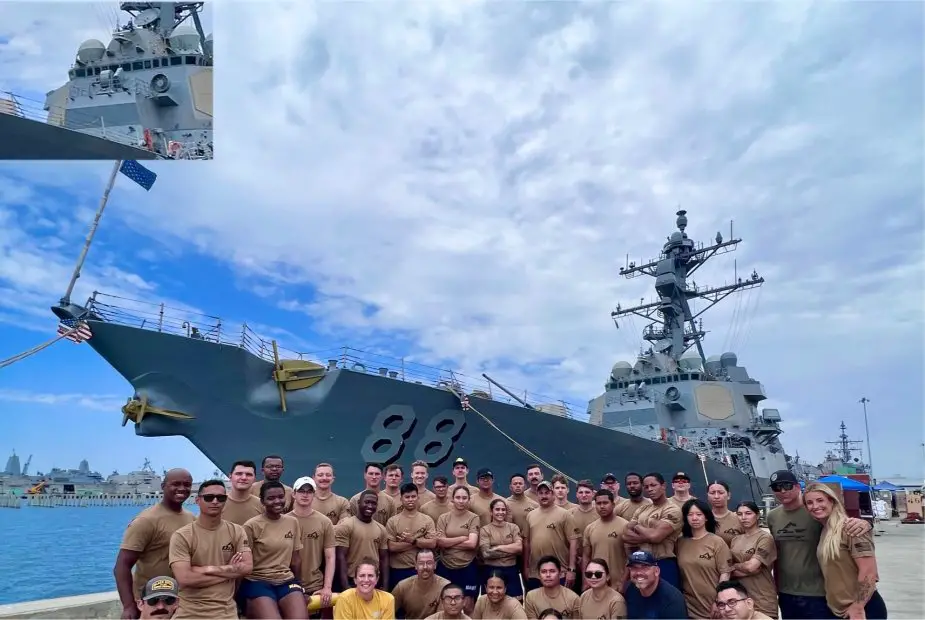Breaking news
First appearance of the laser Helios on US Navy's destroyer USS Preble.
Pictures of the U.S. Navy's Arleigh Burke-class destroyer, USS Preble, have been released and the tactical laser weapon system HELIOS can be seen in them.
Follow Navy Recognition on Google News at this link
 Arleigh Burke-class destroyer USS Preble with the laser weapon system HELIOS (Picture source: US DoD)
Arleigh Burke-class destroyer USS Preble with the laser weapon system HELIOS (Picture source: US DoD)
Helios is a 60-kilowatt laser system, meaning it has twice the power of the AN/SEQ-3 Laser Weapon System, or LaWS installed on the USS Ponce in 2014.
HELIOS is billed as a weapon that can burn small speed boats of the type Iran deploys in armed swarms, and can torch unmanned aerial vehicles out of the sky. HELIOS has a long-range intelligence, surveillance, and reconnaissance capability.
About the destroyer USS Preble
USS Preble (DDG-88) is an Arleigh Burke-class destroyer in the United States Navy. She was the 17th ship of this class to be built at Ingalls Shipbuilding in Pascagoula, Mississippi, and construction began on 22 June 2000. She was launched on 1 June 2001 and was christened on 9 June 2001.
The Arleigh Burke Flight IIA ships have several new features, beginning with USS Oscar Austin (DDG-79). Among the changes is the addition of two hangars for antisubmarine warfare (ASW) helicopters, and a new, longer 5-inch/62-caliber (127 mm) Mark 45 Mod 4 naval gun (installed onto USS Winston S. Churchill (DDG-81) and later ships).
Later Flight IIA ships starting with USS Mustin (DDG-89) have a modified funnel design that buries the funnels within the superstructure as a signature-reduction measure. TACTAS towed array sonar was omitted from Flight IIA ships and they also lack Harpoon missile launchers.
The Arleigh Burke-class destroyers are designed to provide multi-mission offensive and defensive capabilities. These ships serve as crucial assets in global maritime security, conducting anti-air, anti-submarine and anti-surface warfare, as well as executing long-range strike and surface fire support missions.


























